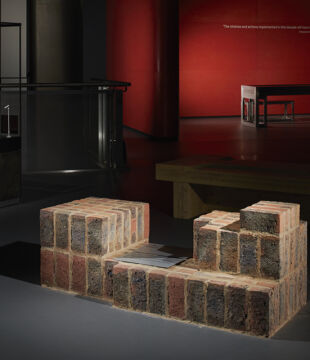
Details
Location: London
Brick Manufacturer: Coleford Brick & Tile
Brick Name: Forest Royal Mixed
Architect: Building Design Partnership
Contractor: AVV Solutions Ltd
About the project
Leighton House is a Grade II* listed building with an internationally significant collection, located within the Holland Park Circle of similar artist’s houses. Built in 1865 for the painter, Frederic, Lord Leighton, the property has evolved and expanded over its 150 year history. While earlier phases were directed by Leighton himself, several less satisfactory interventions were built after his death and during the period in which the house transitioned from private home to public museum, now owned and operated by The Royal Borough of Kensington and Chelsea.
The project successfully removes, reinvents and extends the less significant areas in order to celebrate and safeguard the original house. In doing so, we have completed the restoration of the house and garden and provided the facilities and spaces to create a coherent, inclusive and enjoyable visitor experience, consolidating the museum as an amenity for the local community and beyond – a key driver for the borough, post-Grenfell.
In addition to building fabric conservation and restoration works, our design incorporates new elements that take their cue from the existing, reinterpreting the language of the house through materials, form and colour. The new stair and lift ‘rotunda’ is one of the more obvious interventions which connects all levels of the museum for the first time as well as providing a formal resolution to the eastern end of the museum site, balancing the composition of the garden elevation – a key design challenge.
Leighton House, and the surrounding ‘Holland Park Circle’ of similar artist houses, are all characterised by their use of red brick as an indicator of the prevailing social hierarchies of the time. As Leighton’s fame increased, the brickwork of his house became gradually more ornate and crafted. Brickwork was therefore the natural choice for our extension, but it needed to sit comfortably as a new piece to compliment the historic house, which had to retain its legibility.
Our design process, from concept to delivery, was informed by positive engagement with the brick industry, notably the BDA in developing the detailing, and Taylor Maxwell and BDA member Coleford Brick and Tile, to underpin the feasibility of the brickwork required to deliver the design. Over 15 bespoke handmade bricks including radials and specials, were designed, scheduled and coursed to create vertical ribbing and banding, inspired by the original house detailing and ziggurats. (Also informing the new faience design). The 70/30 blend of ‘Mixed Burgundy’ and ‘Light Forest Royal’ brickwork mediates between the tone of the 1920’s Perrin Wing and that of the original house, both of which are read against the new extension.
The final agreement and consent for the brick tone, detailing and workmanship quality was managed through an extensive sample panel undertaken by Quinn with their specialist contractor AVV. The established positive relationship with Coleford was critical in resolving the unprecedented event of the original clay running out, which subsequently required further test fires to achieve the consented brick specification plus accurate scheduling to ensure the remaining clay was sufficient for the batches required.
Sponsored by Northcot Brick
















